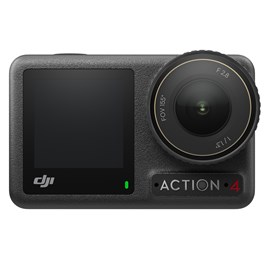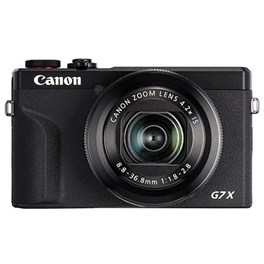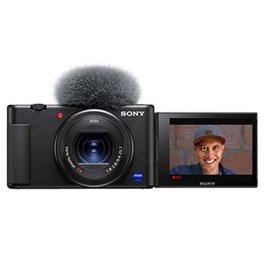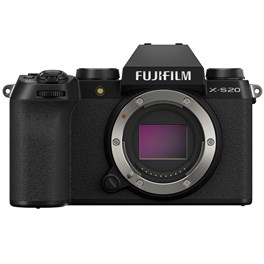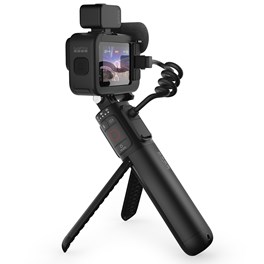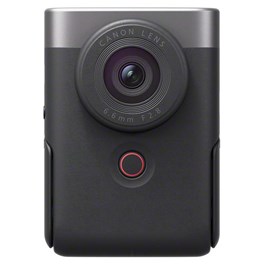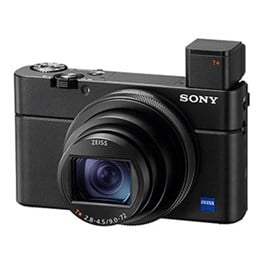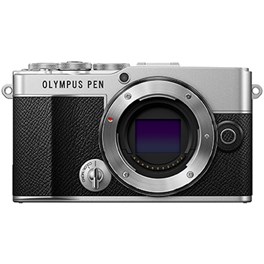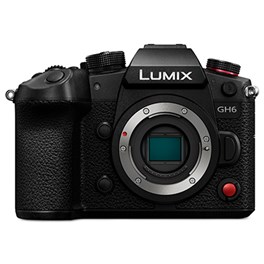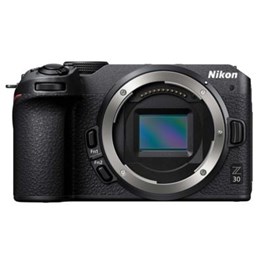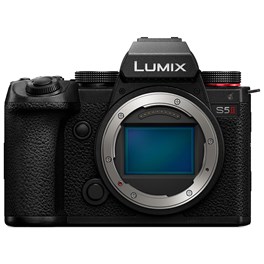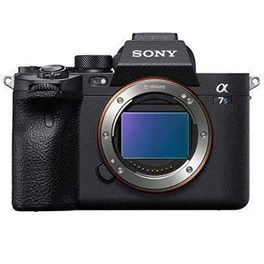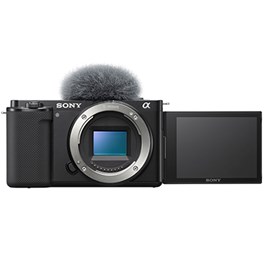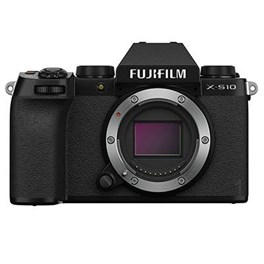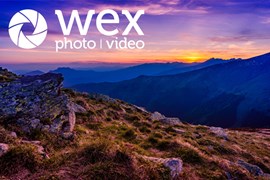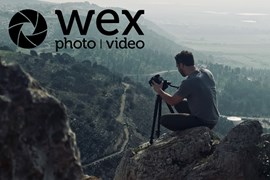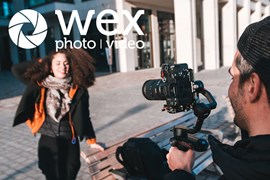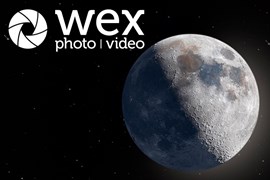
Welcome to your one-stop-shop for vlogging kit – our guide to the best vlogging cameras in 2024. Thanks to the proliferation of small, capable cameras that can produce high-quality video, vlogging is more accessible than ever. Getting professional-grade footage used to be something that would cost thousands and require serious expertise. These days, the game has changed.
The definition of “vlogging” can be pretty broad. For this guide, we’ve made a few assumptions as to what vloggers in specific are going to be looking for, as opposed to general video shooters. For instance, a good vlogger may or may not shoot alone, but they should at least have the ability to. So a good vlogging camera should be easy for a single person to comfortably operate for extended periods. Vlogging can require you to be out and about for extended periods, so good battery life is a must. The camera should be easy to use one-handed, in case the vlogger needs to film themselves, and it should have the capacity to make doing that nice and straightforward.
So, with that in mind, what are the key components of a vlogging camera? There’s a lot we could talk about here, as all sorts of different camera specs affect how capable a camera will be for vlogging, but to cut to the chase, we’ve boiled it down to key elements.
Weight - If you’re an outdoorsy kind of vlogger, someone doing run-and-gun filmmaking in the streets or on other locations, having a camera that won’t weigh you down and become a pain to carry is critical. Remember also that if you buy an interchangeable-lens camera, you’ll have to factor in the weight of the lenses you use.
Flip-around screen - For filming yourself, as many vloggers do, a flip-around screen is critical for being able to check your framing and focus as you shoot. This is an absolutely obligatory feature in any new vlogging camera that comes out these days, but isn’t always included on older ones, so do check.
Video resolution/frame rate - The megapixel count of a vlogging camera isn’t particularly important – if anything you want it nice and low. What you do want to check is the maximum video resolution it can shoot. Full HD (1080p) has been standard for long enough that anything lower is going to look markedly inferior, so this is the minimum standard you should be looking at.
However, 4K is better if you can get it. Not only is the video better quality and better for displaying on 4K monitors, you can also crop into the footage to give yourself more options in editing. Higher resolutions like 6K and 8K are certainly nice if you can get them, but as a vlogger it’s unlikely you need them.
Frame rate is the other thing to mention – that is, how many frames per second a camera can shoot. Ideally the minimum frame rate you want for smooth-looking footage is 30, expressed as 30p or 30fps. Having 60p is nice if you can get it, but not necessarily essential. Frame rates higher than that (120p, 240p and beyond) are great too as they allow you to get super-slow-motion footage for creative effects – though be aware this often requires a cut in resolution.
Audio options - Pristine, clear audio is absolutely critical in making video for an audience – nothing feels more amateurish than a video with fuzzy, badly recorded sound. While modern vlogging cameras do have better built-in mic setups, ideally you want a camera that has the capacity to connect an external microphone (commonly via a 3.5mm input jack). This will make a marked difference to the overall quality of your content – see our guide to the best microphones. A headphone socket for monitoring levels can be handy as well.
We’ve picked out the best vlogging cameras we feel fit these criteria, at a range of different price points.
Quick Navigation
Best Cheap Vlogging Cameras
As we mentioned in our intro, one of the best things about the consumer video camera revolution is how it has democratised vlogging and made it accessible to more people. While there are plenty of high-budget vlogging cameras (and we’ve included a few later in the list), a list of the best cheap vlogging cameras is going to contain some absolutely stellar options – and we’ve compiled a few favourites here.
In order to maximise value, it’s worth thinking about the type of vlogging camera you want to use. Specialist cameras like gimbal cameras (with built-in stabiliser systems) and action cameras (i.e. small and waterproof cameras) are well worth looking at, as you don’t need to factor in the cost of lenses. They also tend to be cheaper because they are only really designed to shoot video, whereas many consumer cameras are also capable for photography – a fact that’s reflected in the price.
We’ve picked out some stellar options of budget-friendly vlogging cameras to help get you shooting without breaking the bank.
DJI Pocket 2

The DJI Pocket 2 is an extremely portable, pocket-sized camera with which you can single-handedly capture unmissable moments. Featuring 3-Axis stabilisation, ActiveTrack 3.0, an AI editor, and the DJI Matrix Stereo, Pocket 2 provides you with magic at hand to capture sharp, high-quality images as well as record smooth videos. The vast array of built-in effects and functions will help you create share-worthy content with as little hassle as possible.
£279.00 View
DJI Pocket 2 Creator Combo

The DJI Pocket 2 Creator Combo is an extremely portable, pocket-sized camera with which you can single-handedly capture unmissable moments. Featuring 3-Axis stabilisation, ActiveTrack 3.0, an AI editor, and the DJI Matrix Stereo, Pocket 2 provides you with magic at hand to capture sharp, high-quality images as well as record smooth videos. The vast array of built-in effects and functions will help you create share-worthy content with as little hassle as possible.
£379.00 View
Pros:
- Super-smooth hand-held stabilisation
- Extremely portable
- Complex built-in mic setup – and can use wireless external mics
Cons:
- Image gets noisy in low light
The DJI Pocket 2 is an outstanding gimbal camera with a built-in 3-axis stabilisation system. Optical stabilisation is able to compensate automatically for external movements of the camera caused by hand-shake, the end result being super-smooth footage, even if the user is walking and shooting. This isn’t the newest gimbal camera from DJI – that honour belongs to the DJI Pocket 3. However, the more affordable DJI Pocket 2 is still available and makes for a fantastic option for budget-conscious vloggers.
The DJI Pocket 2 is a well-named camera, as it is quite literally pocketable, and it can produce high-quality 4K 60p video. The ActiveTrack 3.0 is also a great feature, which can automatically track subjects in the frame and follow them around. This can be especially useful if you need to film yourself, as you can set the camera down or mount it on a tripod, and trust it to keep you centred in the frame.
Audio on the DJI Pocket 2 is excellent – you have a sophisticated four-mic built-in system that uses DJI Matrix Stereo technology to enable the capture of surround sound audio – though if you prefer, you can connect up a wireless DJI mic (available as part of the DJI Pocket 2 Creator Combo, which may appeal to those with a bit more budget. Just be aware that the 1/1.7” CMOS is on the small side, and can struggle with noise when the light gets low.
Elgato Facecam
The Elgato Facecam is a top quality webcam designed specifically for creators that need high definition, smooth and precise video streaming. It has a pro-grade lens and cutting-edge image sensor as well as high-speed circuitry and onboard memory for professional level optics.
£149.99 View
Pros:
- Ultra-affordable webcam
- Easy to set up and use via USB-C
- Practical 82-degree field of view
Cons:
- Desktop use only
If the type of vlogging you do (or are planning to do) is relatively simple, then a webcam could be a more cost-effective choice than a fully fledged camera system. The Elgato Facecam is an ideal plug-and-play solution for vloggers who just need a desktop camera and not much beyond that. It plugs in via USB-C and is designed to be extremely easy to set up and use. Its lens offers impressive quality, and provides an 82-degree field of view that’s optimal for delivering pieces to camera from an indoor environment.
Naturally this format of camera does restrict your options – it’s not something you’re going to practically be able to use to shoot on location. However, many vloggers simply don’t need this kind of functionality, and if your vlogging predominantly comprises simple, indoor setups where you’re speaking to camera, then picking up the Elgato Facecam could be a brilliantly cost-effective solution.
DJI Osmo Action 4 Standard Combo
Capture stunning videos and images of your adventures with the DJI Osmo Action 4 Standard Combo. The 1/1.3-inch camera sensor delivers excellent performance in low light, and you can achieve immersive detail with 4K/120fps video capabilities and 155° ultra-wide FOV. With incredible HorizonSteady for image stabilisation and a durable waterproof build, the Osmo Action 4 records the action anywhere.
£289.00 View
Pros:
- Fantastic price for a capable action camera
- Wide field of view with great video quality
- Fast and convenient magnetic mounting
Cons:
- Battery life not the best
A fantastic GoPro alternative, the DJI Osmo Action 4 is a modern action camera with all the features you’d expect – it’s waterproof, it’s shockproof, it’s got exceptionally effective stabilisation and it can be mounted in a huge variety of ways. If you’re planning on some adventurous vlogging in challenging conditions, a little camera like this will be your best friend.
The Osmo Action 4 features an upgraded 1/1.3-inch sensor that produces significantly improved image quality compared to previous entries in the series. Video experts will appreciate the inclusion of the D-Log M colour profile, a flat profile that provides the broadest dynamic range possible in order to deliver maximum flexibility when it comes to colour grading. However, if you’re a more casual vlogger than this, the DJI Osmo Action 4 also provides tremendous plug-and-play functionality. It’s an easy and enjoyable action camera to use.
Best Cameras for Youtube
The concept of a “YouTuber” these days is a pretty broad one, so it stands to reason that the best cameras for YouTube should be jacks of all trades. Many people’s YouTube channels mostly involve filming themselves in their own bedroom, kitchen or studio, but other channels go in for outdoor shoots, run-and-gun vlogging, interview pieces in unusual places and more. Some channels may start with one, and gravitate to the other! That’s why you want a camera that will be unflappable, resilient and versatile.
We’ve also listened to the YouTube community when making this list, and picked out some cameras that YouTubers have specifically cited as being a favourite – in particular the capable compact Canon PowerShot G7 X Mark III, which you’ll meet shortly.
It’s important to remember that “YouTuber” and “vlogger” are hardly very different categories, and many of the other cameras on this list are perfectly suitable for starting your own vlogging channel. These are just the ones we feel are particularly likely to suit the needs of the majority of YouTubers.
Canon PowerShot G7 X Mark III Digital Camera - Black
Save £50, Was £749
The Canon PowerShot G7 X Mark III allows users to create content that defies expectations and surpasses what you're used to seeing from your smartphone. Incredible 4K video, sumptuous 20.1-megapixel photos and high-speed shooting that stops fleeting moments in time. Please note: This is the black version of this camera.
£699.00 View
Pros:
- Excellent, uncropped 4K video
- Live-streaming capability
Cons:
- No hotshoe
- Somewhat short zoom
The Canon PowerShot G7 X Mark III is a hugely popular camera among YouTubers. It’s not hard to see why. This capable compact camera does everything an online vlogger could need, all in one slim and convenient package. It captures gorgeous 4K video using the full width of its sensor – there’s no crop like with some other Canon cameras – and its high-quality lens has a 4.2x zoom. Not the biggest, but useful enough.
For YouTubers, there are vital features like an external microphone port. What’s more, the G7 X Mark III also has live streaming capability, which is incredibly handy. The f/1.8 maximum aperture of the lens makes it easy to create a shallow depth of field, much more effectively than a smartphone.
You can use Bluetooth to pair the G7 X Mark III with a smartphone or tablet, making it easy to share and back up your clips on the fly. This camera basically does everything a YouTuber could want!
Sony Vlog ZV-1 Digital Camera
Designed for modern vloggers or anyone looking for a simple, all-in-one solution for content creation, the Sony Vlog ZV-1 provides professional image quality in a pocket-sized body. The camera is powered by a 1.0-type stacked Exmor RS CMOS image sensor with integral DRAM, enabling a variety of serious video capabilities, including 4K and Super Slow Motion. As of February 2021, a new software update has become available for you to use the ZV-1 camera as a high-quality video and audio camera. As well as this, you can now live stream from your ZV-1 via a simple USB cable connection. Start by connecting your camera with UVC/UAC over a USB cable to a PC, giving you access to live streaming and online communication. Alternatively, connect your ZV-1 to a Sony Xperia smartphone for on-the-go live streaming - Xperia 1 II or Xperia 5 II upgraded to Android 11.
£649.00 View
Pros:
- Designed specifically for vlogging
- Great video quality
Cons:
- Stabilisation not the best
- Somewhat limited zoom
Though Sony has produced plenty of compact cameras, the Sony ZV-1 is the first specifically tailored to vloggers. This means it’s got a useful vari-angle screen that lets you shoot and self-shoot from any angle, as well as a sophisticated and optimised internal microphone.
A wind shield is also supplied with the camera, improving audio quality when shooting outside. It skips out on a few standard camera features like a pop-up flash or a viewfinder, under the assumption that vloggers don’t really need them. Which, to be honest, they don’t!
With extremely small dimensions, the Sony ZV-1 is easy to slip into a bag and take anywhere with you. This makes it a perfect choice for travelling vloggers and YouTubers. Shout out to the autofocus as well, which is class-leading. The Eye and Animal AF modes in particular are absolutely stellar. Sony has also released newer versions of this camera, the ZV-1F and ZV-1 II. While they are fundamentally a similar proposition to the original ZV-1, both cameras feature some upgraded features such as a wider zoom lens or an upgraded built-in microphone, and are well worth checking out if you have a little more budget to play with.
Fujifilm X-S20 Digital Camera Body - Black
In line with Fujifilm’s dedication to tried and tested technology, the X-S20 pairs its 26.1MP X-Trans 4 BSI CMOS Sensor with the high-speed image processing engine ‘X-Processor 5’. This masterful combination gives way to improved 6.2K 30P 4:2:2 10-bit internal video recording, an upgraded Hybrid AF system, and dedicated vlogging modes to inspire a new generation of creatives to push the boundaries.
£1,149.00 View
Pros:
- 6.2K 10-bit internal video
- Impressive 5-axis stabilisation
- Gorgeous selection of X-mount lenses
Cons:
- Not weather sealed
- X-mount lenses are on the expensive side
The successor to the much-loved X-S10, the Fujifilm X-S20 is unquestionably the best choice for vlogging on Fujifilm. It’s great for YouTubers who want to establish a fast and efficient workflow for their projects, as it boasts plenty of presets and time-saving shooting modes that allow you to get great-looking footage without spending hours grading and post-processing. If you’re the kind of vlogger who wants to get things done quickly but still to a high standard, the X-S20 is a solid bet.
It’s a Fujifilm mirrorless camera, meaning it uses the X-mount and thus has access to XF lenses. These are some of the best and most interesting lenses around, full of character and expression, with the ability to create sumptuous bokeh. They also have fewer budget-friendly options than systems like Canon RF or Nikon Z, which is something to bear in mind.
GoPro HERO12 Black Creator Edition
Experience incredible 5.3K HDR image quality, enhanced HyperSmooth video stabilisation, and 2x extended battery life with the GoPro HERO12 Black Creator Edition. Enjoy pre-set effects and 8x slo-mo footage with a rugged, lightweight device that includes front and back touchscreens. Capture colours and details with mounts and accessories, including additional light/sound mods and a tripod grip.
£499.00 View
Pros:
- Large sensor format supports range of aspect ratios
- Improved battery life over previous GoPro Hero cameras
- Exceptional stabilisation (as ever)
Cons:
- Not as capable in low light as larger-sensor cameras
This is the latest and greatest edition of GoPro’s flagship HERO series of action cameras. You likely know what a GoPro is – a tough little waterproof camera cube that’s great for filming extreme sports and the like – and the HERO12 Black builds on everything previous models have added. It sports the larger sensor introduced in the HERO11, which makes it easier to crop into footage and produce content for a wide variety of aspect ratios – essential for the modern vlogger who needs to think about vertical video as well as classic widescreen. It also sports the same HyperSmooth system that has become synonymous with the series, making it easier to capture dynamic footage while on the move.
The main additions to the HERO12 were tweaks rather than overhauls, such as boosting the runtime of the rechargeable Enduro battery. This ‘Creator Edition’ comes with useful accessories such as the Volta battery grip that doubles as a tripod, and the Media Mod that adds a directional mic. Since it comes at the same price as the HERO11’s Creator Edition, there’s no reason not to snap up the newer model.
Best Vlogging Cameras With Flip-screen
As we’ve mentioned, a flip-around screen is a vlogger’s best friend. It may sound like a small thing, almost trivial, but the first time you try to film yourself without one you’ll understand. After all, there’s a reason that 99% of TikToks are all shot using the phone’s front camera – because you can see yourself!
We’ve picked out the vlogging cameras with high-quality flip-screens that deliver exactly what you need for pieces to camera. Of course, the screen isn;t the only thing, and needless to say they have impressive specs elsewhere across the board. Also, as flip-screens are a feature that’s useful right across the price spectrum, we’ve included both affordable models for beginners and a pro-grade mirrorless camera for professionals. No matter your budget, no matter your experience level, these are the cameras that will make filming yourself a total breeze.
Canon PowerShot V10 Advanced Vlogging Kit - Silver
The Canon Powershot V10 is the perfect next step for creators looking to elevate their content and stand out online. With an all-new innovative design, the Powershot V10 is a pocket-sized vlogging powerhouse, combining a 19mm wide-angle lens with 4K video capture, digital IS, stereo sound recording, and a built-in foldable stand to provide users with the means for studio-quality content on the go.
£459.00 View
Pros:
- Clever design is perfect for one-handed shooting
- Slim and pocketable
- Built-in-stand
Cons:
- No optical stabilisation
Canon went back to the drawing board for its latest PowerShot vlogging camera, and the result is the clever V10, which at first glance doesn’t look much like a camera at all. Once you start digging into it, however, the design really makes sense – it fits perfectly in one hand, and its wide-angle lens makes it perfect for self-shooting. The design is much easier to hold in this manner than a conventionally designed camera, and while you don’t get the flexibility of interchangeable lenses, you do get a much more convenient and portable vlogging setup.
Footage quality from the PowerShot V10 is great, going up to 4K 30p – however it’s in its design that this camera truly excels. We love the inclusion of the little built-in stand for quickly propping the camera up on a desk – no need to buy a tripod! – and we appreciate that while the built-in mics offer respectable audio quality, there’s also the option to plug in an external mic.
Sony Cyber-Shot RX100 VII Digital Camera
The RX100 VII from Sony is an ideal point-and-shoot camera for serious photographers. Featuring a 1.0-type stacked 20.1MP Exmor RS CMOS sensor, a 24-200mm f/2.8-4.5 Zeiss Vario-Tessar fixed lens, and a single burst shooting drive mode that allows users to capture up to 90 sequential images per second. Video users are also catered for with the RX100 VII featuring 4K and HDR video, with Real-Time Tracking and Real-Time Eye AF. 257-point focal-plane phase-detection AF points, and 425-point contrast AF make it the fastest performing autofocus system in the world for a camera of its type.
£1,049.00 View
Pros:
- Terrific image/video quality
- Mic jack
- Exceptional video autofocus
Cons:
- Average battery life
- No hotshoe for mic
Sony’s range of tiny RX100 compact cameras is one of the most popular around. No wonder they’re on their seventh instalment! The Sony RX100 VII represents a pivot towards vloggers, being the first member of the series to include a 3.5mm mic jack.
The combination of a newly developed 20.1MP 1-inch sensor and the super-fast Bionz X processor makes this camera super-fast and responsive. The class-leading autofocus system is one of the best in the business, and the 4K video looks fantastic.
The flip-around screen on the RX100 VII is excellent, with 921,000 dots of resolution. It makes for a fantastic tool for vlogging. It is worth being careful with the battery, as you can run it down quickly if you’re not paying attention, so make sure you’ve got a charger on hand. Still, the portability and versatility of the RX100 VII make it a perfect vloggers’ camera to take everywhere.
Olympus PEN E-P7 Digital Camera Body - Silver
By blending classical styling with contemporary optical features, the Olympus PEN E-P7 stands as an exciting creative tool for on-the-go image-makers. With an integrated 20MP Live MOS sensor and high-powered TruePic VIII image processor, this Micro Four Thirds camera system has the capacity to create visually stunning images at the press of a button. You are further afforded stunning 4K quality video, in-body 5-axis stabilisation, high-functioning continuous AF, and Face Priority/Eye Priority AF. This makes the PEN E-P7 the ideal companion for urban exploration, where it excels in capturing dynamic portraits and artistic video content. The front-facing Profile Control dial gives access to instant switching between photo modes, whilst the overall aesthetic conforms to the sophisticated designs of the Olympus PEN series. For quick-action photo transfers, the PEN E-P7 has in-built WiFi and Bluetooth connectivity, as well as direct access to the intuitive OI.Share app.
£749.00 View
Pros:
- Stunning 4K-quality video recording
- In-camera USB charging
- Huge catalogue of MFT lenses
Cons:
- Not fully weatherproof
- Flip-down screen doesn’t play well with tripod
The Olympus PEN E-P7 is a seriously exciting creative tool for on-the-go image-makers. Due to its compact overall form-factor, classical styling, and tilting LCD screen, this is a perfect pocket-sized travel companion for those wanting both still- and moving-image performance.
When it comes to high-quality video, the Olympus PEN E-P7 does not disappoint. You are able to capture stunning 4K-quality visuals, creative time-lapse shots, and even make use of a wide range of Art Filters. Olympus has further integrated an intuitive in-body 5-axis image stabilisation. This promises up to 4.5 steps of compensation for blur-free, high-quality images - great for when exploring new cities, taking to the nature trail, and vlogging on the go.
Screen-wise, the Olympus PEN E-P7 uses a design that’s common to inexpensive vlogging cameras – the tilting flip-down monitor. This is great for filming yourself handheld, as it’s easy to deploy and suits a one-handed grip. One thing that’s worth noting though is that it doesn’t work too well when the camera is mounted on a tripod, as the two will get in each other’s way. The E-P7 is the best choice for those whose self-filming is mostly going to be done hand-held.
Instead of having to charge bulky battery packs and carry around extensive plug adapters, the Olympus PEN E-P7 utilises in-camera USB charging to guarantee a more efficient, stress-free power solution suited to the travelling content creator. You can even transform your mobile device into an intuitive remote camera control, which is ideal for capturing stunning time-lapse videos, big group photos, and dynamic self-portraits on the road.
Panasonic Lumix GH6 Digital Camera Body
Since Panasonic’s last release, the GH series has evolved with innovative, user-driven features to become a first-choice, renowned tool for creators. With a 25.2-megapixel Digital Live MOS Sensor, updated Venus Engine Processor and 5.7K 30p internal video recording in ProRes 422 HQ, the Lumix GH6 is the latest addition to the series that continues to push the boundaries of mirrorless cameras.
£1,399.00 View
Pros:
- Standout video recording quality
- Flexible flip-screen display
- Huge number of video codecs
Cons:
- Higher-end market price
- Battery life could be better
The Lumix GH series is world-renowned for its outstanding, professional video recording performance. Equipped with both a next-generation 25.2-megapixel Live MOS Sensor without LPF (low-pass filter) and an updated Venus Engine with double the processing power, the GH6 is no exception.
The Lumix GH6 is capable of 5.7K 30p internal video recording available in ProRes 422 HQ and ProRes 422, and offers both higher resolution and higher bit rates thanks to its 5.7K 4:2:0 10-bit 60p/50p and 5.8K 30p/25p/24p 4:2:0 10-bit anamorphic 4:3 modes. By utilising the full area of the sensor, the GH6 provides the highest level of image quality and versatility for exceptional vlog content and greater flexibility in post-production.
The Lumix GH6 also features a 3.0-inch, 1.84 million-dot, free-angle tilting touch LCD screen that is ideal for vloggers who need to be in front of the camera. Going handheld is also easy with the GH6 due to a new ultra-high-precision 5-axis gyro sensor updated algorithm that offers super-stable 7.5 stops of Body I.S. and Dual I.S.2 that appropriately compensate for panning, tilting, or hand-shakes.
Best 1080p Vlogging Cameras
4K isn’t everything! Full HD 1080p resolution is plenty of quality for vlogging, and if you want to save some cash – not to mention some space on your hard drive – then getting a vlogging camera that excels at shooting 1080p Full HD can be the way to go. Full HD has a host of advantages – it’s easier to work with, as you don’t have to deal with your memory cards quickly filling up. Also, many cheaper cameras have limits on their ability to shoot 4K, such as harsh recording time limits or restricted frame rates.
If you’re shooting in 1080p, you’re likely looking at older cameras that have been considerably discounted since launch. We’ve picked out a full-frame model that is available at a fantastic price – significantly cheaper than many contemporary APS-C cameras!
Pros:
- Full frame for an incredible price
- In-body stabilisation
- Textured handgrip and great handling
Cons:
- No 4K options at all
Sony, commendably, keeps many of its older cameras in circulation long after their release dates. So even though we’re now on the A7 IV and the A7R V, the Sony A7 II is still available to pick up for a fantastic price, and is one of the most cost-effective ways to pick up a new full-frame camera.
The Sony A7 II arrived in late 2014, meaning it pre-dates the real 4K boom. As such, it’s a camera that can shoot at a maximum resolution of Full HD 1080p – and the footage looks fantastic. It also pre-dates the era of ultra-high resolution sensors, and is equipped with just 24MP. May sound stingy for photographers, but it’s plenty for bloggers. We also love the introduction of in-body stabilisation, and the A7 II should be commended for its handling, which is excellent thanks to the chunky textured handgrip.
Best Low Light Vlogging Cameras
Getting good vlogging results in low light requires a camera that’s built for the job – something that can be achieved in a number of different ways. It might be down to sensor size – a big sensor creates a cleaner image with less noise, meaning high ISOs can be used with confidence. And on that subject, the ISO range itself needs to be paid attention to, as you’ll need to crank it up as light levels drop.
Also, pay attention to the lens range. Does it contain lots of options with large apertures? This will really help you get more viable footage in low light without having to resort to bumping the ISO up.
Low-light specialist cameras can be very expensive – but they don’t have to be. We’ve included a broad range of options in this section of the guide, including affordable vlogging cameras that do an excellent job in low-light, as well as more premium cameras for those who need exceptional performance (yes, the Sony A7S III is here…). Let’s crack on.
Nikon Z30 Digital Camera Body
Take the next step in your content career with the Nikon Z30 Digital Camera. Designed to help you improve your content and give followers a better experience, the Z30 allows you to create with more light, power and versatility whilst providing an abundance of helpful automatic and user-friendly features. This is the perfect upgrade for those that need to flex between home, the studio and the road.
£699.00 View
Pros:
- Stunning 4K 30fps footage
- Broad ISO range
- Built-in stereo microphone
Cons:
- No headphone socket
- No image-stabilised sensor
The Nikon Z30 camera is designed for content creators to upgrade to a user-friendly 4K setup. With powerful features that are easy to use, it's perfectly suited for use at home, in the studio, or on the move.
Shooting at 4K 30fps means you’ll get crisp visuals for your viewers and you can even capture smooth slow-motion with 120fps shots at 1080p to add some creative flair. The large CMOS sensor and wide ISO range help to eliminate complicated lighting setups as the camera can handle low-light conditions without taking a hit on video quality.
Whilst the Z30 does feature a built-in stereo microphone that has a wind reduction mode, the lack of a headphone socket means you can’t monitor audio levels first-hand. It feels like a minor inconvenience though, given that you’re getting such a capable camera that will drastically improve your vlogging content.
Panasonic Lumix S5 II Digital Camera Body
A step above its predecessor, the Panasonic Lumix S5 II provides incredible performance. A first for Lumix cameras, Hybrid Phase Detection Auto-Focus detects subjects in difficult conditions and offers all-around AF improvements. The 24-megapixel full-frame sensor can record 6K video internally and up to 180fps in Slow & Quick capture. With other powerful functions, this is a versatile camera.
£1,699.00 View
Pros:
- Incredible low-light AF
- Full-frame quality
- Tons of video options
Cons:
- No slot for CFExpress cards
The new kid on the block in the Lumix S full-frame series, the Panasonic Lumix S5 II was hailed for finally bringing phase-detection autofocus to the table. Previous Panasonic cameras relied on contrast-detect, but the capable Hybrid Phase Detection AF on the Lumix S5 II feels like a serious upgrade. It’s especially good in low light, able to doggedly lock onto a subject with impressive accuracy.
Elsewhere, you’ve got a gorgeous full-frame sensor that makes the most of its larger pixels to deliver an exceptionally clean image, even when the light gets low. There’s an absolute stack of video resolution and codec options, similarly to the Lumix GH6, while the new low-profile heat management system gives you the option of unlimited recording times. It’s lighter than many other Lumix S cameras, too, and the L-mount lens series is expanding apace with many astounding optics.
Sony A7S III Digital Camera Body
Free Gorillapod worth £99 Plus £150 Trade-in bonus
The Sony A7S III Digital Camera Body is the latest addition to Sony's S series camera line up. These cameras are designed to provide the highest level of sensitivity possible and the Sony A7s III does just that. It's equipped with an Exmor R 12MP Full-Frame BSI Sensor with an ISO sensitivity range from 80 to 102400, expandable from 40 to 409600. A newly designed BIONZ XR Processing engine provides up to an 8x faster performance over previous models. Its video capabilities are overwhelming, offering 4K 120P (4:2:2 10bit) recording and FHD 240P for stunning slow-motion video. It's equipped with an incredible 759 point on-sensor phase decision AF with real-time eye tracking of both humans and animals, as well as real-time tracking in both video and stills. This camera demonstrates Sony's ability to produce stunning image quality and professional performance in one body.
£3,389.00 View
Pros:
- Can turn night into day with high ISOs
- Super-fast performance
- Fast Hybrid Autofocus
Cons:
- Premium, professional price
The first Sony A7s camera debuted in 2014, and it was a revelation. Anyone who was following the industry at the time probably remembers the feeling of seeing that initial video sample released by Sony, showing just how capable its incredible sensor was in low light, transforming a night-time beach scene from basically invisible to looking like full daylight at ISO 409,600. Witchcraft.
These days, we’re at the Sony A7s III, and it’s the finest distillation of the formula yet. The combination of an Exmor R 12MP full-frame BSI sensor (nice and low-resolution for video) and the upgraded BIONZ XR processor results in a camera that captures spellbinding images in stunning 4K quality. It also has effective 5-axis stabilisation, and a sophisticated Fast Hybrid Autofocus system that works exceptionally well in low light.
Best Mid Range Vlogging Camera
So, you’re not a total beginner and you know your way around a vlogging camera. At the same time, vlogging isn’t your full-time gig, and you don’t have the budget to spend on premium vlogging cameras designed for professionals (or perhaps the inclination to learn their complex features). You’re not alone – this is actually a pretty common description of many hobbyists or part-time vloggers, and it’s why there are so many fantastic mid-range vlogging cameras to choose from.
For this final section, we’ve picked out the best vlogging cameras that offer more depth and functionality than many beginner models, without threatening to break the bank, or offering high-end features that the mid-range user simply doesn’t need. There’s lots of choice here – we had a hard time narrowing it down to three – but we’ve included excellent options at a range of price points.
Sony ZV-E10 Digital Camera Body
Sony’s ZV-E10 is a dedicated vlogging camera, designed to produce professional-level video content that will engage with your audience, be it on Youtube, Twitch or Facebook. The camera is equipped with a powerful 24.2 Megapixel APS-C Exmor CMOS sensor that offers 4K (up to 30p) and Full HD slow motion (up to 120P) video capture, and with the option to pair with 60+ compatible premium Sony lenses, you’ll be able to capture some truly stunning content. The camera is equipped with a range of intuitive and useful features that lend themselves to vlogging such as, a vari-angle touch screen, a high-quality integrated directional microphone and the use of Sony’s highly regarded Real-Time Eye AF that will ensure focus is maintained whilst you’re vlogging.
£599.00 View
Pros:
- Great for streaming
- Loads of E-mount lenses
- Excellent Eye AF
Cons:
- Electronic stabilisation incurs heavy crop
After the success of the Vlog ZV-1 compact, Sony expanded its vlogger-focused ZV range with a mid-range mirrorless model. Step forward, the Sony ZV-E10, a firmly vlogger-oriented camera that can make use of the huge catalogue of E-mount lenses, giving the user huge versatility in crafting their setup.
The ZV-E10 inherits all the features that make Sony cameras such a compelling prospect, especially the autofocus, which is once again some of the best in class. We particularly like the snappy and accurate Eye AF, which is great for interviews and pieces to camera. The ZV-E10 can record 4K at up to 30p, and Full HD at up to 120p if you want to indulge in some slow-motion. It doesn’t have optical stabilisation – and the electronic IS does incur quite a vicious crop, so you may want to also invest in a gimbal to really get the best out of the camera.
Fujifilm X-S10 Digital Camera Body
Well known for building sleek but super-powerful cameras, Fujifilm has excelled themselves with the Fujifilm X-S10 mirrorless camera body. This tiny-bodied camera is aimed at enthusiasts who want to limit the weight of their kit bag but still need stunning image and video quality. Unlike most other smaller-bodied cameras on the market that are just simply too small to operate efficiently, the X-S10 has a larger grip which allows effective one-handed and for you to be as accurate and efficient as you would be on a larger-bodied camera. To be able to construct such a small camera, Fujifilm has had to reimagine the internal layout and design smaller components. One of which is the IBIS system which is 30% lighter and smaller than the X-T4's IBIS. The X-S10 is a true testament to Fujifilm's designers and their skill and mastery of camera construction.
£825.00 View
Pros:
- Lightweight and sophisticated
- Comes in vlogger’s kit
Cons:
- No 4K 60p
- No weather sealing
If the fabulous Fujifilm X-S20 featured above was out of your budget, you may want to consider its excellent predecessor. Fujifilm has always been confident that its X-S10 would be popular with vloggers. So much so that it has made the Fujifilm X-S10 available as part of a vlogger’s kit. The manufacturer has put a lot of work into making the X-S10 light and small, with a tiny body aimed at anyone who doesn't want to carry too much bulk around. Despite this, the body still has a pleasingly chunky grip, making it enjoyable and satisfying to use.
The video quality is excellent, with the X-S10 able to capture DCI 4K at 29.97p, 200Mbps and 4:2:2 10bit recording using HDMI. Some may quibble at the lack of 4K 60p, but really this is more than fit for purpose for most vloggers. Plus, using a Fujifilm X camera gives you access to the X-series lenses, which make up arguably the best lens range for APS-C right now.
Browse our full range of digital and vlogging cameras »

Buying Guide
Vlogging – or “video blogging” for those new to the term – has become a cultural phenomenon. A whole new genre of video creatives has arisen on social media and video sharing platforms, including YouTube, Twitch, Facebook and more. Vloggers serve a multitude of purposes with an abundance of sub-genres: including travel vlogging, the popular vlog-mass, food vlogging, or video diaries to name a few.
It’s no wonder that popular camera manufacturers want to jump onto the market with cameras dedicated specifically to vlogging. With the evolution of our phone cameras, however, investing in a dedicated camera for vlogging means that the cameras themselves must at least perform better than your phone camera, be as easy to use as your phone camera, and just as compact.
With so many great choices on offer, it can be hard to know how to pick the camera that’s right for you. If you’re a bit lost with all the different types of vlogging camera, don’t worry. We’ve put together this quick guide to help you choose from the many options available. Here’s a quick checklist of the things you should look for when buying a vlogging camera.
What to Look for in a Vlogging Camera
Video Quality
The first and foremost thing to check is video quality. It sounds obvious, but you need to be sure that your camera can capture high-quality video. For vlogging, you don’t need cutting-edge 8K necessarily, but having at the very least Full HD video is an essential, as this is the resolution most online video is watched at. Being able to shoot 4K is not essential, but is a good way to future-proof yourself as more and more content moves into this space.
Lenses
What lenses are you going to be using? This depends on the type of video you’re going to shoot, but also on the kind of camera you buy. If you’ve picked up a fixed-lens compact camera, then the focal length on the box is the only one you’ve got. Interchangeable-lens DSLRs and mirrorless cameras allow for more flexibility, but this kind of setup also costs more.
Audio inputs
A good vlogging camera ideally needs a socket for an external mic, as good sound quality is critical. You may also see this referred to as a 3.5mm mic jack or words to that effect. Ideally, a good vlogging camera will also have a hotshoe on top where you can mount the microphone, otherwise you’ll need to either hold it or come up with another solution. Similarly, having a headphone socket to monitor your audio levels is greatly useful, albeit not essential.
Flip-out Screen
Having a flip-around screen to be able to self-shoot without assistance is also a really handy asset for a good vlogging camera. Whether you’re looking to mount the camera on a tripod or hold itself-style, a flip-out screen will ensure you can always monitor your shot.
Weight
You should also consider a camera’s weight. If you’re going to be travelling with a vlogging camera, or holding it for long periods of time, you probably don’t want something extremely heavy that’s going to weigh you down. Many specific vlogger-oriented cameras are designed to be extremely light and easy to carry for precisely this reason.
Other considerations
Vlogging on a budget can be a challenge, but it doesn’t have to! We’ve assembled a few top tips for the cash-conscious vlogger, to help make sure you’re getting the most for their money.
Shop older models
You don’t necessarily need the latest features! Cameras have been improving at a steady pace for years now, and models from a few years ago can offer fantastic features for a highly tempting price. If a new camera catches your eye, it’s worth checking if an older version is available, as it may do everything you need it to for a lower price. The most famous example is probably the Sony A6000, included in our buying guide above.
Keep an eye out for offers
Sometimes, if you exercise a little patience, a camera you’ve been coveting can come under a discount. A great way to save a bundle is to always be on the lookout for sales, offers and discounts – and pounce when they come up. At the bottom of this page, you can enter your email to sign up for our newsletter and always be in the know about our latest offers.
Shop used
Used cameras are the perfect way to get hold of gear that you simply couldn’t afford brand-new. At Wex, we thoroughly check all the Used equipment we receive and give each item a condition score so you know what you’re getting.
Consider a compact
Compact cameras tend to have smaller sensors than interchangeable-lens cameras, however, they are also generally much more affordable. When buying a mirrorless or DSLR camera, you also have to factor in the cost of the lens; with a compact, the price on the box is the price you pay for everything you need to start shooting. If you’re trying to keep an eye on your budget, a compact camera is the best place to start looking.
Get cheap editing software
Editing video is essential if you’re a vlogger – there’s no getting around it. If you can afford it, Adobe Premiere Elements is a great slimmed-down affordable version of the full-fat Adobe Premiere program, giving you a simple but powerful editing suite that will be more than enough for vlogs.
Vlogging accessories
As well as your camera, it’s well worth picking up a few handy vlogging accessories to make your shoots smoother. These range from useful to absolutely essential, so it’s worth being familiar with what’s on offer.
External Microphones
We’ve already mentioned the advisability of having an external mic jack, so with that in mind, it makes sense to pick up an external microphone. This will hugely improve the audio quality of your vlogs. Nothing makes video feel amateur faster than bad audio, so do yourself a favour and make sure your videos sound amazing. The Rode VideoMic Go is a hugely popular vlogging mic, but there are others out there worth considering.
Tripods
A good tripod is a tremendous asset for any videographer, allowing you to produce locked-off shots with total stability. It’s worth picking up a specific video tripod if you can, as these come with heads designed to allow for smooth panning shots. But if you just need something that works, any tripod will do. You can also consider tabletop tripods like the Joby GorillaPod if you have a lightweight setup and you’re looking to save space.
Memory cards
It’s essential to get hold of a good memory card, with plenty of space and fast read/write speeds. If you’re working at resolutions of 4K or higher, you need a reasonably sophisticated card to handle the size of the files involved. A card of at least UHS-I class is preferable – though always check precisely which types of card are compatible with your camera, as some can use ultra-fast formats like CFast or XQD.
Camera Bag
Having a good dedicated camera bag to keep all your vlogging equipment in is hugely useful. Specialist camera bags are designed with customisable padded interiors that you can mould around your setup. There are plenty of different types of bags, including backpacks, shoulder bags, rolling bags, hard cases and more.
Lighting
LED lighting can be a really useful way to give yourself a little bit more light in a pinch, whether you’re interviewing a subject or just filming yourself! The best LED lights don’t tend to be too expensive, and many are easy to mount on a tripod or other stand.
Editing Software
You’re going to need a way to edit your footage. This means getting yourself some computing power, and if you want to be flexible, your best bet is a laptop. It’s also worth familiarising yourself with some simple editing software. We’d recommend trying Adobe Premiere Elements 2021, which is the smoothest consumer editing experience around right now.
Spare Batteries
Make sure you’ve got all your essentials. Extra batteries for your camera are a must – the last thing you want is for them to run out mid-shoot. Consider a portable charger as well, as this will let you keep one set of batteries in the camera while the other one is charging, no matter where you are.
Glossary
New to photography and cameras and struggling with terminology? No worries - here's our cheat sheet for the common terms and camera types.
DSLR
One of the most common and recognisable types of camera. DSLR stands for Digital Single-Lens Reflex camera. These are so-called because they use an internal mirror mechanism to provide an optical viewfinder – the image is reflected up towards the eye through a system of mirrors, so what you see is what you get. DSLRs have interchangeable lenses, and tend to be larger than other types of camera, with the advantage that they more commonly offer weatherproofing.
Mirrorless camera
The other main type of interchangeable-lens camera, mirrorless cameras lack the mirror mechanism of DSLRs. This means they don’t have the optical viewfinder system, but tend to compensate by being smaller and lighter. Mirrorless cameras also tend to have cutting-edge video features, with higher resolutions and faster frame rates.
Compact camera
Cameras with fixed lenses that can’t be changed. These lenses can be zoom lenses, which offer focal versatility, or prime lenses, which only have a single focal length, but are of higher optical quality. Compact cameras tend to have smaller sensors than DSLRs or mirrorless cameras (more on which below), but also tend to be more affordable.
CMOS sensor
The most common contemporary type of image sensor. CMOS stands for Complementary Metal Oxide Semiconductor, and they’re built to convert light into electrical signals. They’re the beating heart of any camera and the most important component. They come in different sizes – these are the main ones you need to know about for vlogging:
-
Full-frame - The largest type of sensor is generally seen on consumer cameras. Full-frame sensors provide more physical space for the pixels to occupy, which means cleaner images that have less noise. A full-frame sensor will perform better in low light, and is better for producing images with a shallow depth of field (a sharp subject with an artfully blurred background).
-
APS-C - Smaller than full-frame but still reasonably sized, APS-C sensors are a great choice for intermediate and enthusiast vloggers. They’re commonly seen on mid-range mirrorless cameras and DSLRs, as well as some compacts. Due to the physically smaller nature of the sensor, they cause what’s called a “crop factor”, which makes a lens behave as though it has a longer focal length than it does. The crop factor of APS-C is 1.5x, so mounting a 50mm lens to an APS-C camera will make it behave like a 75mm lens.
-
Micro Four Thirds - A smaller sensor size used as the standard for the Micro Four Thirds system. The advantage is flexibility and portability, with the downside of inhibited low-light performance. The crop factor on a Micro Four Thirds camera is 2x, so a 50mm lens will behave like a 100mm lens. This is quite significant, so make sure to factor it in before buying any lenses.
-
1/2.3-inch sensors (or similar) - This tends to be the size of the sensor found on smartphones, though the exact size can vary.
Frame rates
Frame rate refers to the number of frames captured per second in video footage. You might see it expressed as “30p” or “30fps”.
The frame rates you’ll likely encounter when shopping for cheap vlogging cameras are as follows:
30p - Probably the most common frame rate among affordable vlogging cameras, thirty frames per second is ideal for general-purpose shooting. It captures movement at a normal pace and makes things look natural.
60p - This is a better frame rate for faster action, and rapid movements that won’t look quite right at 30p.
24p - While this is a lower frame rate, it’s the one that the majority of movies have been shot on, and is therefore ideal for getting a cinematic “look”.
120p, 240p and higher - Once you get into these frame rates, you start to get into slow-motion territory. If you want to shoot good-looking slow-motion footage, then being able to use these frame rates is essential.
Video resolutions: SD, HD, Full HD, 4K, 6K, 8K...
When talking about a camera’s video resolution, we’re simply referring to the number of pixels in the image. When one number is used to describe resolution, it’s referred to the number of horizontal lines that make up a picture from top to bottom. So a 480p video is made up of 480 horizontal lines, each of which is 852 pixels wide.
But for vlogging, you probably aren’t working at 480p – or at least, you’d hope not! These are the common resolutions you’ll encounter:
-
1280 x 720 pixels. Also known as high definition, or HD.
-
1920 x 1080 pixels. This is Full HD.
-
3840 x 2160 pixels. This is 4K, UHD or Ultra HD resolution.
-
4096 x 2160 pixels. This is DCI 4K, which is Digital Cinema 4K (the acronym stands for “Digital Cinema Initiative” as that’s who developed it). It’s the same height as UHD, but is wider, as befitting a cinematic resolution. You may also see it referred to as “True 4K”, as some users don’t consider UHD to be 4K. It can be a little confusing!
-
6144 x 3160 pixels. This is 6K resolution, which select newer cameras can capture.
-
7680 x 4320. This is 8K, providing 16 times more pixels than Full HD.
So what should you work in? It may seem like the more pixels the better, as you get more detail and more ability to crop in. However, large resolutions produce large files which can be difficult to handle, and for now, most users simply don’t have the equipment to view anything larger than 4K (and some not even that).
It depends on your audience and who you’re shooting for – Full HD will be more than enough for many vloggers! For now, anyway…
FAQs
What is a vlogging camera?
Vlogging cameras are designed for creating vlogs - video blogs. These cameras typically have features that make them suitable for recording video content, such as high-quality video recording, image stabilisation, and good autofocus capabilities.
What should I look for in a vlogging camera?
Some important features to consider when choosing a vlogging camera include video quality, image stabilisation, autofocus performance, low-light performance, audio quality, and ease of use.
What is the best vlogging camera for beginners?
Some good options for beginner vloggers include the Canon PowerShot G7 X Mark III, Sony ZV-1, and the Panasonic Lumix G85.
Should I use a DSLR camera or a mirrorless camera for vlogging?
Both DSLR and mirrorless cameras can be used for vlogging, but mirrorless cameras are generally better suited for video recording due to their faster autofocus and better image stabilisation capabilities. However, there are many other options such as compact cameras, action cameras and even your smartphone.
Do I need a camera with a flip screen for vlogging?
While a flip screen can be helpful for vlogging, it is not strictly necessary. Some vloggers prefer to use an external monitor or rely on the camera's autofocus features to ensure that they are in focus and in the frame.
What is the difference between optical and digital zoom?
Optical zoom uses the camera lens to zoom in on a subject, while digital zoom crops the image to make it appear closer. Optical zoom is generally preferred as it results in higher-quality images and is not subject to the same loss of detail that can occur with digital zoom.
Browse our full range of digital and vlogging cameras»
How do we decide?
Our in-house photography experts, store staff and partners all work collaboratively to pour over these guides. The cameras and equipment recommended in our guides are based on their personal opinion, empirical experience and of course, feedback from our customers.
We way up price, features, quality and the all-important 'je ne sais quoi' to make sure we recommend products that will delight and inspire.
If you would like more advice on any purchase our contact centre staff are here to help. Alternatively, you can reach us via email or social media.
And don't forget. If you were to purchase anything based on our recommendations you'll be covered by our full returns policy
Buying Guides


